

 The South African
The South African
* For Gunner Glass's reminiscences of the battle of Sidi Rezegh, see the Military History Journal, Vol 14 No 5, June 2009, pp 175-8.
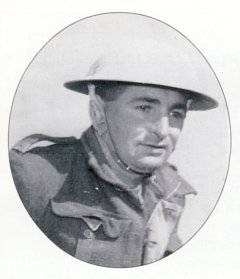
December 1941
It was only a month since we had set out from Mersa Matruh with completely new equipment, and only four months since we had reformed, and here we were back at Mersa Matruh [after the Battle of Sidi Rezegh, 25 November 1941], with much of our equipment lost and the rest of it badly battered, and our strength reduced to half. Many friends were either killed, or wounded, or missing and a large proportion of our officers were casualties and, so, the job of reforming had to be done again.
The first thing our OC [officer commanding] did was to send out a scavenging party to recover guns and vehicles and, eventually, with these and with the guns that had been brought out [after the Battle of Sidi Rezegh], there were four guns for two batteries and barely sufficient vehicles and there seemed no way of having them replaced.
For a while we were allowed to go easy and entertainments were arranged and most of the chaps were sent on POW guards to Alex[andria] and given a couple of days' leave there. We were more fortunate than most of the troops, for we got to spend Christmas in barracks at Mersa Matruh and did very well for ourselves.
On Christmas Day we received a number of reinforcements and, at the New Year, we were all sorted out and the battery, though under strength, was in order again.
January to May 1942
Many of us found ourselves in new jobs and I, with several of my friends, found myself an artillery signaller and our training began, and continued, up to the end of January [1942], when we received further additions of men transferred from the 3rd Transvaal Scottish Battalion and the S[outh] A[frican] Irish Regiment, who were to be trained as gunners.
[The Allied] forces seemed to have 'Gerry' [the Germans] where they wanted him, right up to the middle of January [1942]. Then, when they were getting ready for the next knock, he suddenly pushed them back, and our battery found itself with short notice orders to move up to Gazala.
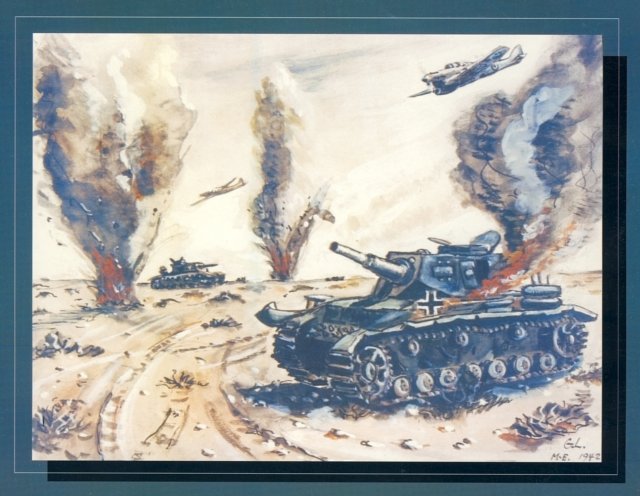
We were on our way within twenty-four hours and spent our first night outside Sollum and the following day, in a dust storm, [we] moved up to El Adem. After two days there, we moved forward to Gazala and took up positions on the escarpment overlooking the sea and awaited, with some trepidation, the honour of fighting a rearguard action, if necessary.
We had only been there two days when we had our first Stuka attack on this position, which brought us six casualties.
The following afternoon, we moved forward of the minefields that had been laid about 1 000 yards (914m) in front of our position and, later, saw the Stukas come over again. They sailed overhead and we were prepared for the worst, but, watching them, I could see them diving at a target on the flats to the north of us and, shortly afterwards, we moved back to our positions.
Then, for some inexplicable reason, probably due to supply difficulties, 'Gerry' stopped his advance. He continued with spasmodic Stuka raids, but did not come to our lines in force.
So, from the middle of February [1942] until his attack on 26 May [1942], life became a monotony of patrols once or twice per week. We sent out one patrol in force in March [1942] and, early in April [1942], 'Gerry' brought up some guns in the night and plastered our sector haphazardly for several hours, in the early morning. These were the major events of the three months prior to his attack.
Cairo leave started at the end of March [1942] and I was one of the first lot to go, for I [had been] due to go two days before we left Mersa Matruh. [On my return], I wondered if the trip there and back was worth it.
In the line, everything was quiet and we had started our training programmes, which occupied our mornings and, in the afternoons, we had a bridge school to occupy ourselves.
Towards the end of April [1942], we received orders, together with the First Brigade, to move out. We went south and took over from a British regiment at Bir el Geff, which formed a salient in our line about ten miles (16km) south of the coast. We settled ourselves nicely here and, after we had got our positions in order and our communications laid, the same quiet settled on us again until the attack began.
May/June 1942
[On a]bout 20 May [1942], we were notified that leave was cancelled and we knew somebody was going to attack and, on 26 May [1942], we discovered it was 'Gerry'. Our OC called us together and told us that our job was to hold out for two weeks until reinforcements could be brought up. The first news of the attack was that 'Gerry' had broken through minefields north of Bir Hakeim with 250 tanks and 2000 men, that 400 tanks in all had passed through and that, in an engagement at Knightsbridge, we had inflicted heavy losses on [the German] tank strength and that everything was going completely according to plan.
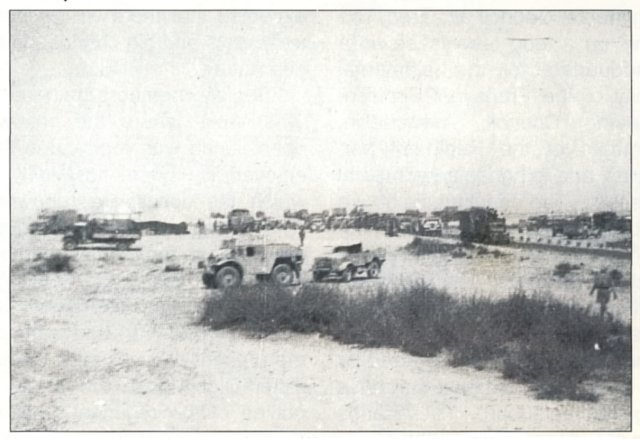
Our next news was that the 15[0th] Brigade had been overrun soon afterwards, we heard of the evacuation of Bir Hakeim.
At three o'clock on 26 May [1942], 'Gerry' started shelling our positions and we were ordered to stand to for an attack. I was sent to the Auxiliary OP (observation post) and had just settled [in] there, when the enemy vehicles were seen coming over the ridge in front of us.
Our guns opened fire and gave them a tough time, but they continued to advance. Soon, the [German] infantry was seen to dismount and move forward in extended order, but the barrage was too much for them and they suffered heavy casualties. They then retired and dug in further back and, for the next two weeks, the only action on our sector was the artillery duels.
On 10 June [1942], we moved into the box south of ours, occupied by the 50th Division, and did patrol work there for two days. That same day, we were told that the next few days would decide the battle. 'Gerry', of course, dealt badly with our tanks during those critical days and we were compelled to withdraw. We then moved back to our [previous] position and, [on] the same day, 12 June [1942], we received orders to move back to Tobruk.
We left our positions late in the afternoon, with a company battalion from the 1st Brigade, and travelled most of the night, arriving in Tobruk the following morning. Our withdrawal was down the Via Balbia and along the coast to Tobruk. We were shelled and machine-gunned [by ground troops] and strafed and bombed by planes all the way into the western sector ofTobruk. We were ordered to the south-east sector [of Tobruk] and told to dig gun positions. We had no sooner completed these than we were ordered to take up positions in the south sector of Tobruk, where we got our battery organised for the expected attack on Tobruk. The south-east sector was taken over by an Indian [Army] battery.
And that is where 'Gerry' attacked ...
(The writer avoided capture when the Allied forces surrendered Tobruk. He did so by breaking out, together with 385 British and South African troops, under the command of Major Sainthill of the 2nd Battalion, The Coldstream Guards, in formation, and with the consent of General Klopper, OC, Fortress Tobruk. He subsequently saw action at the Battle of El Alamein [23 October to 4 November 1942], after which he returned to South Africa. He did not re-attest for service in Europe and was honourably discharged.)
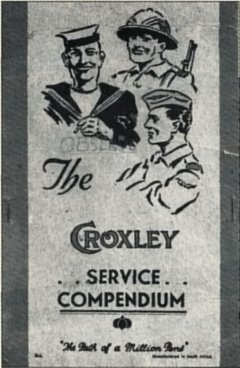
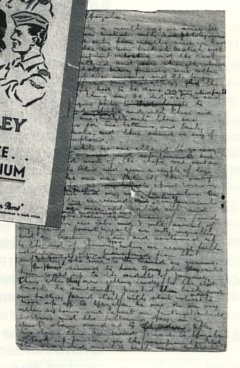
Return to Journal Index OR Society's Home page
South African Military History Society / scribe@samilitaryhistory.org